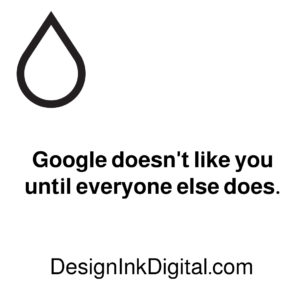SEO, keywords, meta descriptions and alt text…what does all of that mean? And why does it matter? For people and businesses who have a website or social channel …and that’s most of us now, SEO or Search Engine Optimization, means putting up road signs so that specific businesses or services can be easily located by customers in the digital universe. It’s like the difference between spreading breadcrumbs in the forest in hopes that you will be located and having a GPS tracker signaling your location.

Why does SEO matter?
It is estimated that there are 5.6 BILLION internet searches a day. Yes, every day. That translates to 2 trillion searches world-wide annually. Those estimates are based on an average person conducting 3-4 searches in a day. Think about the number of times per day you turn to a computer to look something up. Does 3-4 times seem about right for you? According to Skyword, the trends are indicating that as the world moved to remote work, school and family time the number of digital searches “triggered tectonic shifts.”
How do you stand out in a crowd of 5.6 billion?
The number of queries decreases the likelihood that any of your information will be delivered to those trying to find you, your business, your services, or website. The next time you search for anything, look directly under the search bar to see how many others are competing to be located using that keyword or phrase. You can see that this search of the phrase “Search Engine Optimization” delivered 216,000,000 results in .63 seconds!

SEO provides instructions for finding websites
There are a number of factors that contribute to a well optimized website, article or image that mirror a Liberty puzzle. Building a well integrated SEO plan is like having many small un-seemingly interconnected pieces that require patience, a plan and focus to weave together. And when all of the pieces are connected in just the right way – voila – it’s like magic – all roads lead to you. While building an integrated SEO road takes a focused digital strategy – and is something the DesignInk Digital team loves to build, there are a few simple things you can do to improve your digital presence and make it easier to be found.
SEO begins and ends with relevance
Most search engines want to confirm your relevance and domain authority before sending traffic to your digital address. Assert relevance and domain authority by correlating the information on your website with what customers are seeking with the use of keywords.
Keywords are the foundation of relevance
One of the most practical and simple steps to building a good SEO roadmap is to make certain keywords are dialed in. Keywords are topical words or phrases that are relevant to the content that appears on pages or posts. Identify the keyword by reviewing the main theme of a page or post and assign a unique keyword that most accurately describes the theme. Ideally, the keyword will appear in the text 2-3 times/300 words, more than that is considered keyword stuffing and is not a good SEO practice.
5 on-site keyword elements to build SEO
- Title of the article or page
- Permalink
- Meta-description
- At least one header in the body of the text
- In the alt text used to describe the images in the post
- Include links – see more details about
Helpful hint: Create a checklist or spreadsheet to chart keywords and associated components.
The DesignInk Digital Strategy team uses a free SEO tool from Yoast as a useful resource for building solid on-site SEO as well as a wide array of tools to analyze and build off-page SEO.
Contact DesignInk Digital today and let’s pave the digital road for your website traffic.

